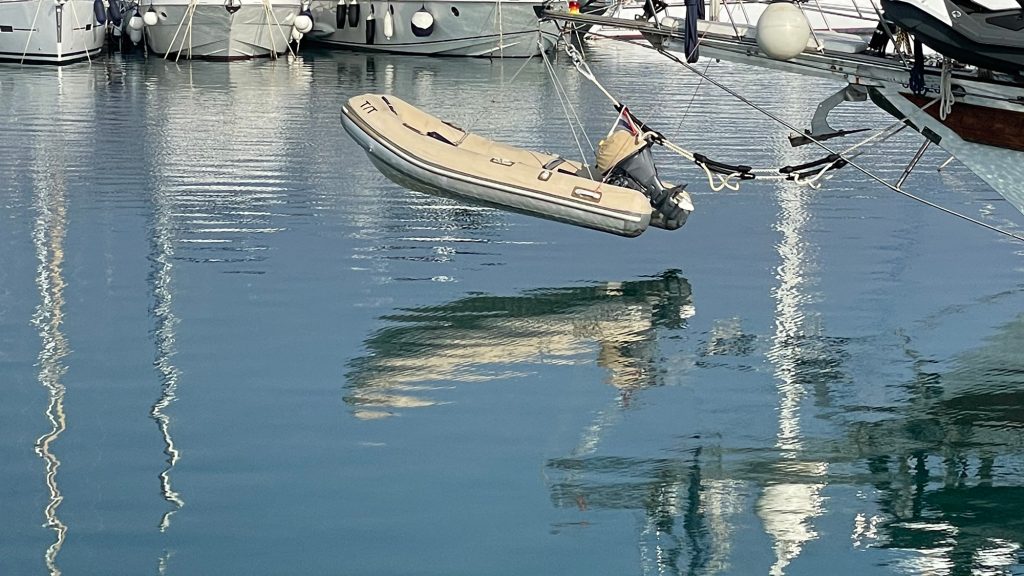Tender Croatia 2025: What Do the New Regulations Mean for Owners in Croatia?
Croatia has recently enacted a new Regulation on Maritime Safety. Its full title is: “Regulation on the Safety of Maritime Navigation in the Internal Waters and Territorial Sea of the Republic of Croatia, and on the Method and Conditions for Supervision and Management of Maritime Traffic” (LINK).
The regulation covers several important topics relevant to recreational boaters and skippers. The complete set of new rules—including those related to navigation and anchoring—is explained in a separate article Boating in Croatia 2025: What’s Changing? . This article focuses on one of the most relevant updates that tender owners should begin preparing for ahead of the 2025 nautical season on the Adriatic: the newly introduced rules for using a tender in Croatia.
What is Tender?
These are small vessels belonging to larger motor or sailing boats or yachts, primarily used to transfer people and cargo from the main vessel to shore. They are most commonly inflatable dinghies equipped with a small outboard engine or paddles.
Tender to Yacht – Naming and Registration Rules
Tenders are often marked with the label “Tender To YachtName” or simply “t/t YachtName” and are frequently not registered separately. If they are registered, they are treated as independent vessels and may navigate freely within the limits of their registration category.
Until now, there were no clear and specific regulations for using a tender in Croatia—only a general guideline allowing operation within visual range of the mother vessel. However, for tenders longer than 2.5 meters and with engines over 5.00 kW (approximately 6.8 HP), a valid navigation permit (or vignette) were already required, enabling free navigation.
Tender, Dinghy, or Jet Ski: What's New in 2025?
With the growth of nautical tourism, yachts have become larger—and so have their tenders. It’s increasingly common to see large, powerful tenders with greater engine capacity, more passenger space, and an extended navigation range. Jet skis are also frequently used as tenders or as a hybrid between a tender and a recreational craft.
The 500-Meter Radius Rule
To enhance maritime safety and regulate the use of support vessels, the new regulation introduces a 500-meter navigation radius:
“A vessel belonging to another maritime object and registered or marked as part of the main vessel’s equipment may navigate within a 500-meter radius from the mother vessel, except when transporting people or cargo to the nearest mooring or between an anchorage and the port to which it belongs.”
This means tenders, dinghies, or similar support vessels may navigate freely within 500 meters of the mother vessel, with certain exceptions for transport to shore or port even if beyond the 500-meter range.
When Is Tender Registration Mandatory in Croatia?

If the tender is used outside the 500-meter radius—for example, to visit a nearby island restaurant, go fishing, shop in a coastal town, or explore the coast—it must be properly registered. This means it must be entered in the official boat register, fly a national flag, have a valid vignette (navigation permit), and—if the engine exceeds 15 kW—be covered by a separate insurance policy.
This rule is a precursor to a broader regulatory shift: Croatian authorities have long planned to prohibit unregistered vessels from navigating in national waters. A new rulebook on the entry of foreign boats and yachts is expected to introduce this restriction officially. The new rule would make it impossible to obtain a navigation permit (vignette) without prior registration. We already covered this topic in a separate article [link]..
What If the Tender Is Already Listed in Yacht Documents?
Some yacht owners already have their tenders listed in documents, which has previously facilitated the vignette application process. However, under the new rules, this is no longer sufficient, if you wish to use the tender outside the allowed 500-meter range. In such cases, the tender must have its own registration and registration number in addition to the “t/t Yacht” marking.
Key Recommendations for Tender Owners in Croatia 2025
Reconsider how you’ve used your tender in the past and how you plan to use it in the 2025 season. Register it accordingly if needed.
After registration, make sure your tender is properly insured—or check with your insurer whether separate coverage is required, especially if the tender is insured jointly with the main yacht. Liability Insurance is mandatory for tenders with engines over 15 kW.
Contact us to assist with your tender registration and to obtain or update your tender navigation permit with accurate data.
Feel free to reach out to us for tailored advice or assistance with your specific tender situation — we might have a solution you haven’t considered yet.
Following these recommendations will ensure safe and stress-free boating along the Croatian Adriatic in the 2025 season.


